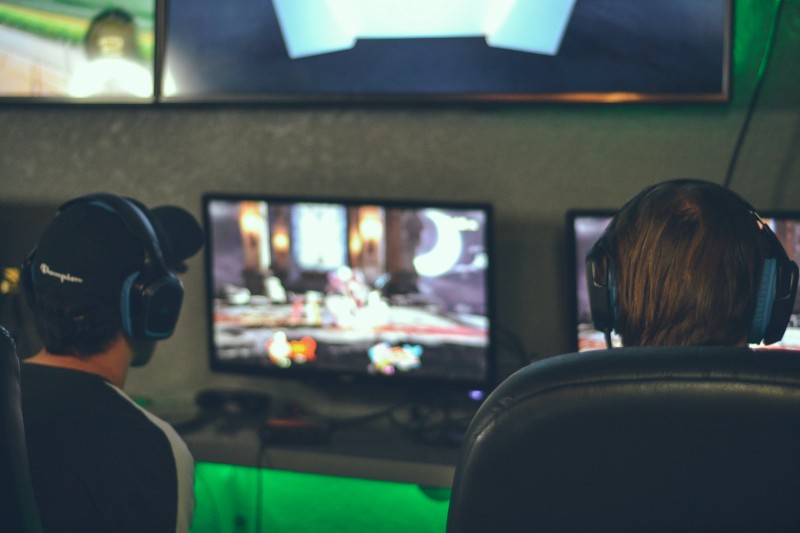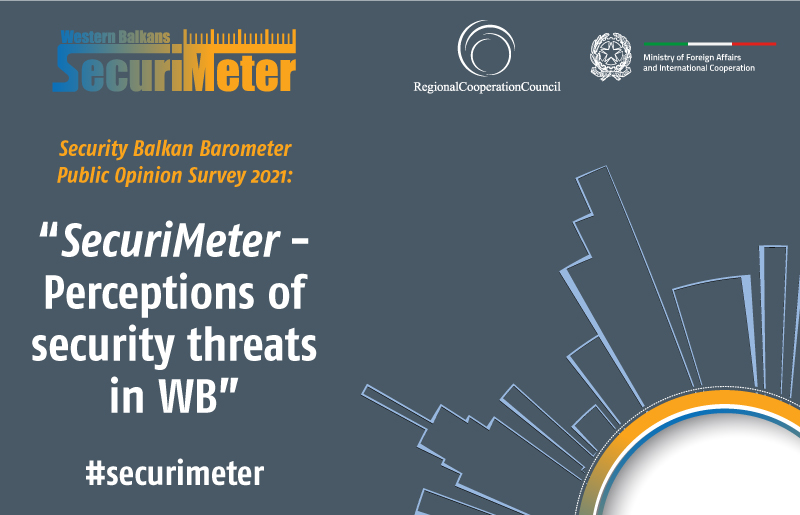- Home/
- News
How Video Games Could Facilitate Radicalization Processes
In Steven Spielberg’s Ready Player One, the lead character escapes the harsh reality of his daily life by playing a massive virtual reality game, stating that this game is the “only place that feels like I mean anything” and that “it’s a place where the limits of reality are your own imagination (…) People come to OASIS for all the things they can do, but they stay for all the things they can be.”[1] The virtual reality game offers an experimental playground for identity and meaning construction, offering a sense of purpose and immersing players fully within an alternative reality. While most are far away from prioritizing a virtual life over the offline reality, video and online games have been and continue to be immensely popular not only among children and teenagers but for users well into adulthood. For instance, while in the U.S. 60% of 18-29 year olds play video games, the percentage for the next age bracket, 30-49, is only 7% lower, still leaving more than half of adults in this age range to play video games [2].
How Terrorists Utilize Video Games
As games are one of the primary elements of popular culture and extremist organizations have continuously sought to utilize references and tools derived from pop culture [3], it should come as no surprise that video games are being employed by extremist organizations for various purposes, including the indoctrination of children, appealing to a wide audience, facilitating radicalization and interactively constructing their ideal reality. A range of extremist organizations have developed their own games or modified existing ones.
For instance, Hezbollah released Special Forces and Special Forces II, which allow players to re-write the history of the Intifadas and turn the tables on the Israeli military. The game is a Call of Duty-style first-person shooter game called Holy Defense, mainly focused on defeating Islamic State fighters [4]. Right-wing groups have also utilized games and gaming servers. The Daily Stormer developed a modification of the popular game Doom 2, which lets players fight against a Jewish world conspiracy and was well-received by the right-wing extremist community with one player commenting that there were “many options for genocide, lots of fun” [5]. The German-speaking right-wing extremist scene has also come to use the gaming platform Discord as a meeting point with the movement Reconquista Germanica drawing around 7,000 users to their server. By their own account, Reconquista Germanica is nothing more than a LARP— a live-action role play game [6].
However, the most well-known group for its use of gaming language — the visual style of first-person shooter games and references to popular games — is the so-called Islamic State (ISIS). ISIS has employed both video game imagery and actual games to their end. By launching an educational app called Huroof — which aims to teach children the Arabic alphabet by encouraging them to match letters with military equipment such as tanks and bombs — it sought to prepare the road to radicalization as early as possible in young users [7]. ISIS has also continuously employed the visual imagery of popular video games. For instance, it made extensive use of footage shot with HD helmet cameras and scenes taken from games such as Call of Duty for their propaganda videos [8]. It supposedly even developed its own game, Salil al-Swarim [The Clanging of the Swords], although it remains unclear whether the game was ever launched [9].
The use of video games is related to and part of the discourse on online radicalization, but so far they have received considerably less attention than other factors contributing to the facilitation of radicalization processes. The research on games in this context must therefore be considered to be in its infancy. In the following paragraphs, two of many mechanisms potentially relevant to the role of games in the radicalization processes are explored, but more robust research findings are necessary before the contribution of games to radicalization processes can be assessed with an adequate level of certainty.
Desensitization to Violence
Potentially the most obvious mechanism by which games could facilitate radicalization processes — at least to those who have researched the psychological effects of playing video games — is that especially popular first-person shooter games can contribute to a desensitization to violence, and, consequently, moral disengagement. While the causal link between violent video games and violent behavior is still contested [10], research has shown that violent video games are associated with lower empathy, a desensitization to violence on both the neural and the behavioral level and the reduction of cognitive and emotional responses to violent stimuli [11].
Canadian psychologist Bandura postulates that moral control can be selectively activated and de-activated. Our moral reasoning can be fooled or consciously deactivated by finding moral justifications for violence, employing advantageous comparisons (the classical ‘but our enemies did worse’), employing euphemistic labeling (targets are ‘neutralized’ not killed), disregarding or distorting the consequences of violence (in games, for instance, by not showing an accurate amount of blood or wounds) or blaming the victims [12]. It has been shown that many top-rated first-person shooter games make use of these tools for moral disengagement [13] and can therefore contribute not only to an acceptance of violence but to an improved ability to de-activate one’s moral control mechanisms. Moral disengagement has been shown to facilitate radicalization processes [14] and extremist organizations seeking to guide their followers to perpetrate violent acts can exacerbate the effect of and benefit from the desensitization to violence and the moral disengagement embedded in violent games.
Perceived Self-Efficacy
Furthermore, games can facilitate radicalization by enhancing the perceived self-efficacy of the players to conduct violent actions. Perceived self-efficacy is the belief in one’s ability to produce desired outcomes; in short, it is the self-belief in one’s own agency [15]. It has been shown that extremist organizations seek to increase the perceived self-efficacy of their potential recruits through social persuasion by authority figures as well as social modeling by peers in order to increase the likelihood that those targeted will be confident that they could fulfill the group’s expectations of them and engage in violent actions successfully and effectively [16]. Games can facilitate self-efficacy beliefs in relation to the perpetration of violence because the interactive nature of games leads to an increased identification with the character one is playing and as one watches the avatar [17], which is often an idealized version of oneself and closely related to one’s identity [18]. As the player succeeds on screen and is rewarded for his violent actions, his confidence in the ability to engage in similar actions increases. Higher identification with game characters, caused by the ability to customize avatars, is associated with more aggressive behavior [19], and, if the avatar is an extremist, is associated with perpetrating violence to facilitate extremist goals. In a time where avatars can be personalized and games offer an increased sense of agency as players move freely through the virtual worlds and pick their own quests, extremist organizations could utilize games to facilitate self-efficacy beliefs relating to violence and thereby increase the likelihood that violent, extremist material resonates with the players.
Conclusion
There are many more mechanisms by which games could facilitate radicalization waiting to be explored by the research community. As gamification and gaming references will continue to spread throughout popular culture, extremist organizations will increasingly pay attention to the benefits these factors could yield for them. It is therefore of paramount importance for academics and practitioners alike to engage thoroughly with the role games can play in the dissemination of extremist propaganda and the facilitation of radicalization processes in the future. _____________________________________________________
References
[1]Retrieved from: https://www.moviequotesandmore.com/ready-player-one-best-quotes/
[2] Brown, A., Younger men play video games, but so do a diverse group of other Americans, (2017) Retrieved from: https://www.pewresearch.org/fact-tank/2017/09/11/younger-men-play-video-games-but-so-do-a-diverse-group-of-other-americans/
[3] Hegghammer, T., Jihadi Culture: The Art and Social Practices of Militant Islamists, Cambridge University Press: Cambridge (2017)
[4] Rose, S., ‘Holy Defense‘: Hezbollah issues call of duty to video gamers, (2018) Retrieved from: https://www.middleeasteye.net/news/holy-defence-hezbollah-issues-call-duty-video-gamers
[5] Ebner, J., Radikalisierungsmaschinen: Wie Extremisten die neuen Technologien nutzen und uns manipulieren. Suhrkamp Nova: Berlin, p. 143 (2019)
[6] Ibid.
[7] Lakomy, M., Let’s Play a Video Game: Jihadi Propaganda in the World of Electronic Entertainment, Studies in Conflict & Terrorism, Vol. 42 (4), pp. 383-406 (2019)
Gramer, R., J Is For Jihad: How The Islamic State Indoctrinates Children With Math, Grammar, Tanks, and Guns, Foreign Policy (February 16, 2017), Retrieved from: https://foreignpolicy.com/2017/02/16/j-is-for-jihad-how-isis-indoctrinates-kids-with-math-grammar-tanks-and-guns/
[8] Scaife, L., Social Networks as the New Frontier of Terrorism: #Terror. Routledge: Oxon (2017)
Lakomy, M., Let’s Play a Video Game: Jihadi Propaganda in the World of Electronic Entertainment, Studies in Conflict & Terrorism. Vol. 42 (4), pp. 383-406 (2019)
[9] Al-Rawi, A., Video games, terrorism, and ISIS’s Jihad 3.0., Terrorism and Political Violence. Vol. 30 (4), pp.740-760 (2018)
[10] Gunter, W. and Daly, K., Causal or spurious: Using propensity score matching to detangle the relationship between violent video games and violent behavior, Computers in Human Behavior, Vol. 28, pp. 1348-1355 (2012)
Ferguson, C. and Wang, C., Aggressive Video Games are not a Risk Factor for Future Aggression in Youth: A Longitudinal Study, Journal of Youth and Adolescence. Vol. 48 (8), pp. 1439-1451 (2019)
[11] Brockmyer, J., Playing Violent Video Games and Desensitization to Violence, Child and Adolescent Psychiatric Clinics of North America, Vol. 24, pp. 65-77 (2015)
Funk, J., Buchman, D., Jenks, J. and Bechtholdt, H., Playing violent video games, desensitization, and moral evaluation in children, Applied Developmental Psychology, Vol. 24, pp. 413-436 (2013)
Engelhardt, C., Bartholow, B., Kerr, G. and Bushman, B., This is your brain on violent video games: Neural desensitization to violence predicts increased aggression following violent video game exposure, Journal of Experimental Social Psychology, Vol. 47, pp. 1033-1036 (2011)
[12] Bandura, A., Selective Activation and Disengagement of Moral Control, Journal of Social Issues. Vol. 46 (1), pp. 27-46 (2019)
Bandura, A., A Commentary on Moral Disengagement: The Rhetoric and the Reality, The American Journal of Psychology. Vol. 131 (2), pp. 246-251 (2018)
[13] Hartmann, T., Krakowiak, K.M. and Tsay-Vogel, M., How Violent Video Games Communicate Violence: A Literature Review and Content Analysis of Moral Disengagement Factors, Communication Monographs, Vol. 81 (3), pp. 310-332 (2014)
[14] Bandura, A., The role of selective moral disengagement in terrorism and counterterrorism in Moggahadam, F. & Marsella, A. (Eds.). Understanding terrorism: Psychological roots, consequences and interventions, American Psychological Association Press: Washington DC, pp. 121-150 (2004)
[15] Bandura, A., Regulation of Cognitive Processes Through Perceived Self-Efficacy, Developmental Psychology. Vol. 25 (5), pp. 729-735 (1989)
Bandura, A., On the Functional Properties of Perceived Self-Efficacy Revisited. Journal of Management. Vol. 38 (1), pp. 9-44 (2012)
[16] Schlegel, L., “Yes, I can”: What is the Role of perceived Self-efficacy in violent Online-radicalization Processes of ‘homegrown’ Terrorists?, Dynamics of Asymmetric Conflict. DOI: 10.1080/17467586.2019.1700539 (2019)
[17] Jenson, J., Taylor, N., de Castell, S. and Dilouya, B., Playing With Our Selves: Multiplicity and identity in online gaming, Feminist Media Studies, Vol. 15 (5), pp. 860-879 (2015)
Lin, J-H., Do video games exert stronger effects on aggression than film? The role of media interactivity and identification on the association of violent content and aggressive outcomes, Computers in Human Behavior. Vol. 29, pp. 535-543 (2013)
[18] Ducheneaut, N., Wen, D., Yee, N. and Wadley, G, Body and mind: A study of avatar personalization in three virtual worlds, (2009) Retrieved from: https://www.researchgate.net/publication/221516323_Body_and_mind_A_study_of_avatar_personalization_in_three_virtual_worlds
[19] Fischer, P., Kastenmüller, A. and Greitemeyer, T., Media violence and the self: The impact of personalized gaming characters in aggressive video games on aggressive behavior, Journal of Experimental Psychology. Vol. 46, pp. 192-195 (2010)
Author: Linda Schlegel
Source: Link



 Development of specialized PCVE web site is funded by EU FUNDS CN 2017-386/831 - "IPA II 2016 Regional Action on P/CVE in the Western Balkans"
Development of specialized PCVE web site is funded by EU FUNDS CN 2017-386/831 - "IPA II 2016 Regional Action on P/CVE in the Western Balkans"